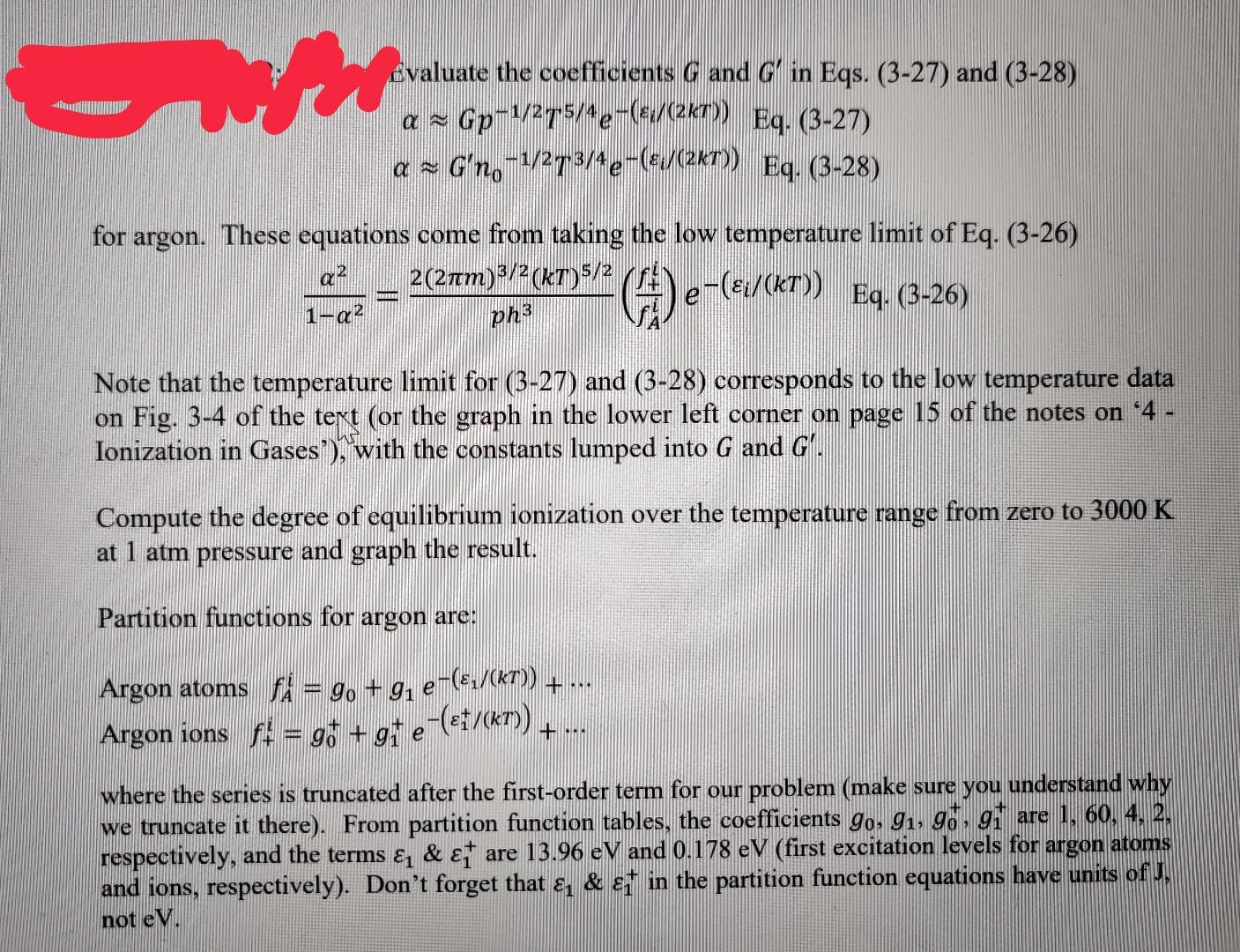Answered step by step
Verified Expert Solution
Question
1 Approved Answer
Evaluate the coefficients G and G in Eqs. (3-27) and (3-28) Gp1/2T5/4e(u/(2kT))Eq.(327)Gn01/2T3/4e(i/(2kT))Eq.(328) for argon. These equations come from taking the low temperature limit of Eq.

Evaluate the coefficients G and G in Eqs. (3-27) and (3-28) Gp1/2T5/4e(u/(2kT))Eq.(327)Gn01/2T3/4e(i/(2kT))Eq.(328) for argon. These equations come from taking the low temperature limit of Eq. (3-26) 122=ph32(2m)3/2(kT)5/2(fAifti)e(i/(kT))Eq.(326) Note that the temperature limit for (3-27) and (3-28) corresponds to the low temperature data on Fig. 3-4 of the text (or the graph in the lower left corner on page 15 of the notes on '4 Ionization in Gases'), with the constants lumped into G and G. Compute the degree of equilibrium ionization over the temperature range from zero to 3000K at 1atm pressure and graph the result. Partition functions for argon are: Argon atoms fAi=g0+g1e(1/(kT))+ Argon ions f+i=g0++g1+e(1+/(kT))+ where the series is truncated after the first-order term for our problem (make sure you understand why we truncate it there). From partition function tables, the coefficients g0,g1,g0+,g1+are 1,60,4,2, respectively, and the terms 1&1+are 13.96eV and 0.178eV (first excitation levels for argon atoms and ions, respectively). Don't forget that 1&1+in the partition function equations have units of J, not eV
Step by Step Solution
There are 3 Steps involved in it
Step: 1

Get Instant Access to Expert-Tailored Solutions
See step-by-step solutions with expert insights and AI powered tools for academic success
Step: 2

Step: 3

Ace Your Homework with AI
Get the answers you need in no time with our AI-driven, step-by-step assistance
Get Started


